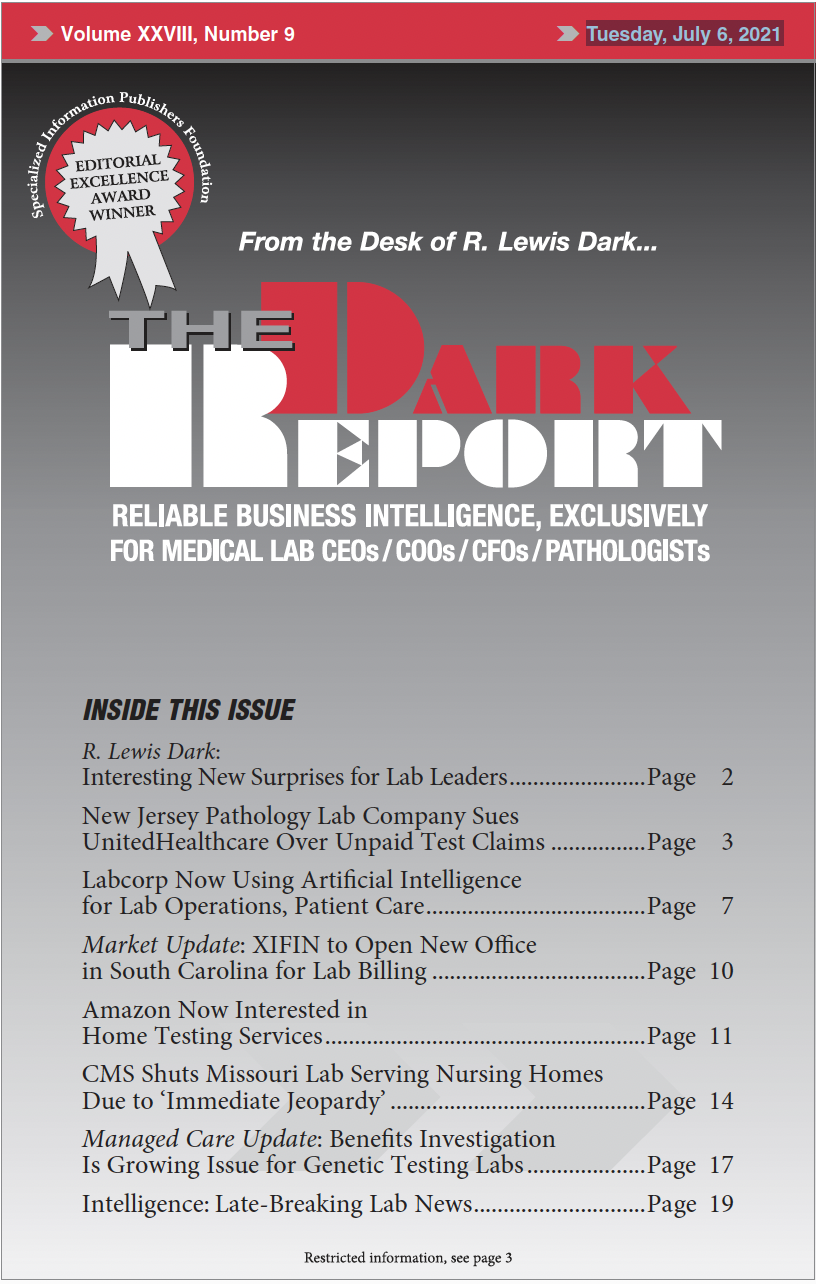CEO SUMMARY: In the past year, internet retailing giant Amazon has built sizeable clinical laboratories in the United States and the United Kingdom. Now it has regulatory clearance to sell a molecular COVID-19 test to consumers for home collection. Comments made in the past month by an Amazon spokesperson describe Amazon’s diagnostic testing activities as …
Amazon Now Interested in Home Testing Services Read More »
To access this post, you must purchase The Dark Report.


